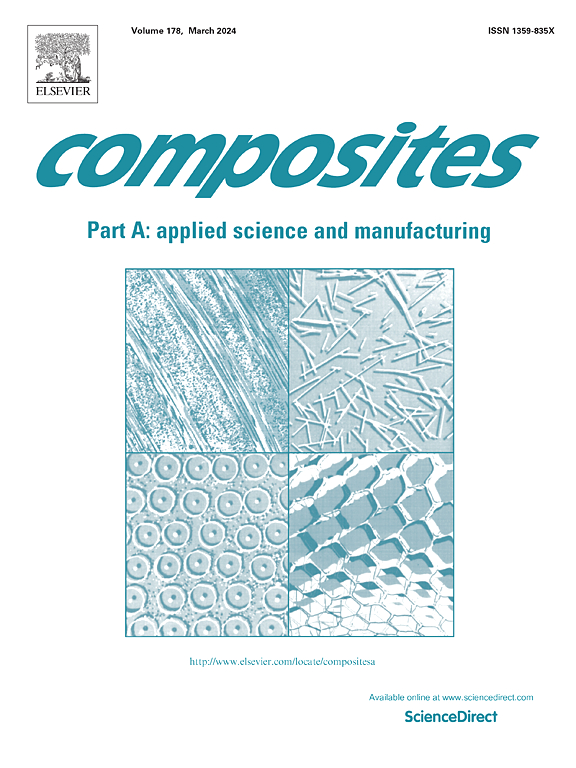An improved progressive damage model for three-dimensional five-directional braided composites under longitudinal compression
IF 8.1
2区 材料科学
Q1 ENGINEERING, MANUFACTURING
Composites Part A: Applied Science and Manufacturing
Pub Date : 2025-03-23
DOI:10.1016/j.compositesa.2025.108880
引用次数: 0
Abstract
Various failure modes of three-dimensional five-directional braided composites (3D5DBCs) under longitudinal compression have been observed, including yarn fracture and kinking, transverse inter-fiber cracking, matrix plastic deformation/fracture and fiber/matrix interfacial debonding, leading to the difficulty in predicting their mechanical properties. This study proposes an improved progressive damage model for 3D5DBCs under longitudinal compression, addressing all the observed failure modes. Then, the proposed progressive damage model is implemented in a finite element (FE) model to predict the mechanical responses and properties of 3D5DBCs under longitudinal compression. The numerical predictions in terms of compressive stress–strain relations, compressive strengths and failure modes are in good agreement with the experimental results, demonstrating the effectiveness of the proposed progressive damage model. Finally, the failure envelopes of 3D5DBCs under compression-shear loading are predicted using our FE model, and the effectiveness of several classical failure criteria on the strength prediction of 3D5DBCs is discussed.
纵向压缩下三维五向编织复合材料的改进渐进损伤模型
本文章由计算机程序翻译,如有差异,请以英文原文为准。
求助全文
约1分钟内获得全文
求助全文
来源期刊

Composites Part A: Applied Science and Manufacturing
工程技术-材料科学:复合
CiteScore
15.20
自引率
5.70%
发文量
492
审稿时长
30 days
期刊介绍:
Composites Part A: Applied Science and Manufacturing is a comprehensive journal that publishes original research papers, review articles, case studies, short communications, and letters covering various aspects of composite materials science and technology. This includes fibrous and particulate reinforcements in polymeric, metallic, and ceramic matrices, as well as 'natural' composites like wood and biological materials. The journal addresses topics such as properties, design, and manufacture of reinforcing fibers and particles, novel architectures and concepts, multifunctional composites, advancements in fabrication and processing, manufacturing science, process modeling, experimental mechanics, microstructural characterization, interfaces, prediction and measurement of mechanical, physical, and chemical behavior, and performance in service. Additionally, articles on economic and commercial aspects, design, and case studies are welcomed. All submissions undergo rigorous peer review to ensure they contribute significantly and innovatively, maintaining high standards for content and presentation. The editorial team aims to expedite the review process for prompt publication.
 求助内容:
求助内容: 应助结果提醒方式:
应助结果提醒方式:


